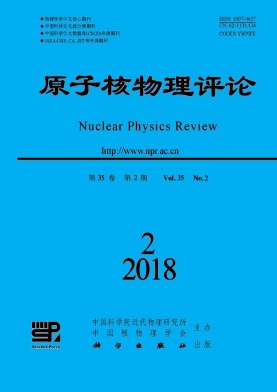|
[1]
|
WEBER D C, RUTZ H P, PEDRONI E S, et al. International Journal of Radiation Oncology Biology Physics, 2005, 63(2):401. |
|
[2]
|
LOMAX A J, BOEHRINGER T, CORAY A, et al. Medical Physics, 2001, 28(3):317. |
|
[3]
|
LIU Hongdong, YANG Lu, PEI Xi, et al. Nuclear Physics Review, 2018, 35(01):78. (in Chinese) (刘红冬, 阳露, 裴曦, 等. 原子核物理评论, 2018, 35(01):78.) |
|
[4]
|
KANAI T, KAWACHI K, KUMAMOTO Y, et al. Medical Physics, 1980, 7(4):365. |
|
[5]
|
RUTZ H P, WEBER D C, GOITEIN G, et al. International Journal of Radiation Oncology Biology Physics, 2008, 71(1):220. |
|
[6]
|
KOOY H M, GRASSBERGER C. The British Journal of Radiology, 2015, 88(1051):20150195. |
|
[7]
|
PEDRONI E, BACHER R, BLATTMANN H, et al. Medical Physics, 1995, 22(1):37. |
|
[8]
|
MARCHAND B, PRIEELS D, BAUVIR B, et al. Proceedings of EPAC. 2000:2539. |
|
[9]
|
NILL S, BORTFELD T, OELFKE U. Zeitschrift Für Medizinische Physik, 2004, 14(1):35. |
|
[10]
|
TROFIMOV A, BORTFELD T. Technology in Cancer Research Treatment, 2003, 2(5):437. |
|
[11]
|
OELFKE U, BORTFELD T. Medical Dosimetry, 2001, 26(2):113. |
|
[12]
|
LOEFFLER J S, DURANTE M. Nature Reviews Clinical Oncology, 2013, 10(7):411. |
|
[13]
|
KANG J H, WILKENS J J, OELFKE U. Medical Physics, 2007, 34(9):3457. |
|
[14]
|
PARDO J, DONETTI M, BOURHALEB F, et al. Medical Physics, 2009, 36(6):2043. |
|
[15]
|
BORTFELD T, SCHLEGEL W, RHEIN B. Medical Physics, 1993, 20(2):311. |
|
[16]
|
SOUKUP M, FIPPEL M, ALBER M. Physics in Medicine and Biology, 2005, 50(21):5089. |
|
[17]
|
PFLUGFELDER D, WILKENS J J, NILL S, et al. Zeitschrift Für Medizinische Physik, 2008, 18(2):111. |
|
[18]
|
COTRUTZ C, LAHANAS M, KAPPAS C, et al. Physics in Medicine and Biology, 2001, 46(8):2161. |
|
[19]
|
ZHANG R, NEWHAUSER W D. Physics in Medicine and Biology, 2009, 54(6):1383. |
|
[20]
|
MOON C, KIM J, CHOI G, et al. European Journal of Operational Research, 2002, 140(3):606. |
|
[21]
|
EL-SAMAK A F, ASHOUR W. Journal of Artificial Intelligence and Soft Computing Research, 2015, 5(4):239. |
|
[22]
|
WANG L, TANG D B. Expert Systems with Applications, 2011, 38(6):7243. |
|
[23]
|
MYNAMPATI D K, YAPARPALVI R, HONG L, et al. Journal of Applied Clinical Medical Physics, 2012, 13(5):108. |
|
[24]
|
STROOM J C, HEIJMEN B J M. Radiotherapy and Oncology, 2002, 64(1):75. |
|
[25]
|
SCHATTI A, ZAKOVA M, MEER D, et al. Physics in Medicine and Biology, 2013, 58(23):8555. |
|
[26]
|
BERNATOWICZ K, LOMAX A J, KNOPF A. Physics in Medicine and Biology, 2013, 58(22):7905. |
|
[27]
|
SCHATTI A, ZAKOVA M, MEER D, et al. Physics in Medicine and Biology, 2014, 59(14):3813. |






 甘公网安备 62010202000723号
甘公网安备 62010202000723号 DownLoad:
DownLoad: